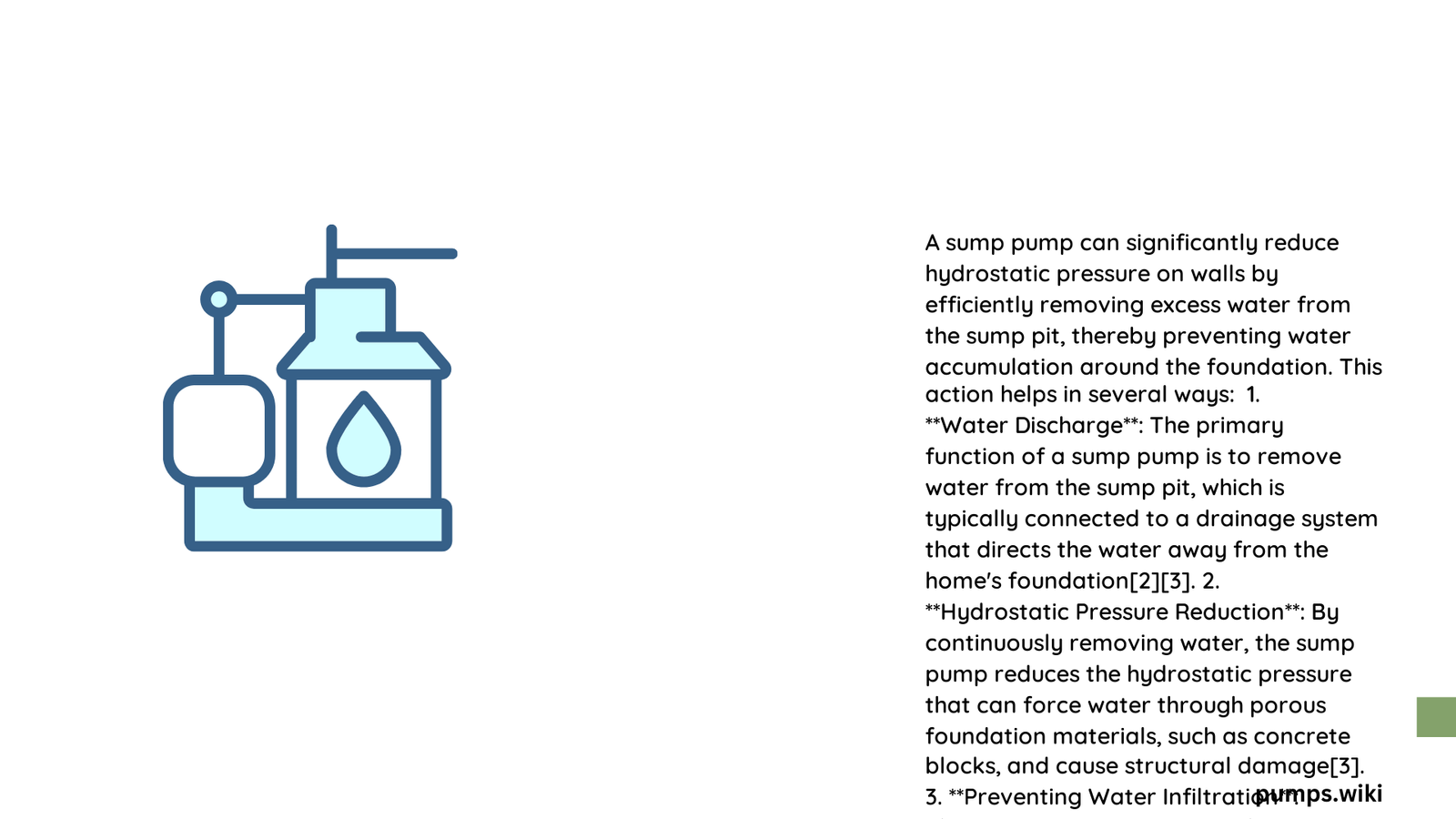Sump pumps are critical defense mechanisms against basement wall pressure, utilizing advanced water management techniques to protect residential foundations. By systematically removing accumulated groundwater and redirecting moisture away from structural foundations, these ingenious devices create a comprehensive barrier against potential water-induced structural damage, ensuring homes remain dry, stable, and structurally sound.
What Causes Wall Pressure in Basements?
Basement wall pressure emerges from multiple environmental factors:
| Pressure Source | Impact Level | Potential Damage |
|---|---|---|
| Groundwater Accumulation | High | Structural Cracks |
| Soil Saturation | Medium | Wall Displacement |
| Seasonal Water Fluctuations | Variable | Foundation Weakening |
How Do Sump Pumps Mitigate Wall Pressure?
Sump pumps address wall pressure through strategic water management:
- Hydrostatic Pressure Reduction
- Automatically detect water accumulation
- Remove water before significant pressure builds
-
Prevent continuous stress on basement walls
-
Water Redirection Mechanism
- Collect water in designated sump pit
- Pump water away from foundation
- Maintain consistent moisture control
What Technical Components Prevent Wall Pressure?
Pump Capacity Considerations
- Typical Pump Capacities:
- Residential: 1,000-5,000 gallons per hour
- Commercial: Up to 10,000 gallons per hour
- Factors determining capacity:
- Basement size
- Local groundwater levels
- Soil drainage characteristics
Installation Critical Points
Effective sump pump installation requires precise engineering:
- Optimal Sump Pit Location
- Central basement positioning
- Minimum 2-foot diameter
-
24-30 inches ground penetration
-
Discharge Pipe Requirements
- 1.5-2 inch diameter
- Minimum 10-foot distance from foundation
- Gravity-assisted drainage slope
What Challenges Impact Sump Pump Effectiveness?
Several environmental factors influence performance:
- Soil Composition
- Clay soils: Higher water retention
- Sandy soils: Better natural drainage
-
Mixed compositions: Require specialized pump configurations
-
Groundwater Dynamics
- Seasonal water table fluctuations
- Regional precipitation patterns
- Geological underground water channels
How Often Should Sump Pumps Be Maintained?
Recommended maintenance schedule:
- Annual professional inspection
- Quarterly self-diagnostic checks
- Battery backup system verification
- Discharge pipe clearance assessment
Cost-Benefit Analysis
| Pump Type | Initial Cost | Operational Efficiency | Lifespan |
|---|---|---|---|
| Submersible | $200-$500 | High | 5-10 years |
| Pedestal | $100-$300 | Moderate | 3-7 years |
Expert Recommendations

Professional waterproofing experts consistently recommend:
– Professional installation
– Regular maintenance
– Comprehensive water management strategy
– Multiple moisture control layers
Conclusion Insights
Sump pumps represent a sophisticated, proactive approach to preventing basement wall pressure. By understanding their complex mechanisms and maintaining them diligently, homeowners can significantly mitigate potential water-related structural risks.
